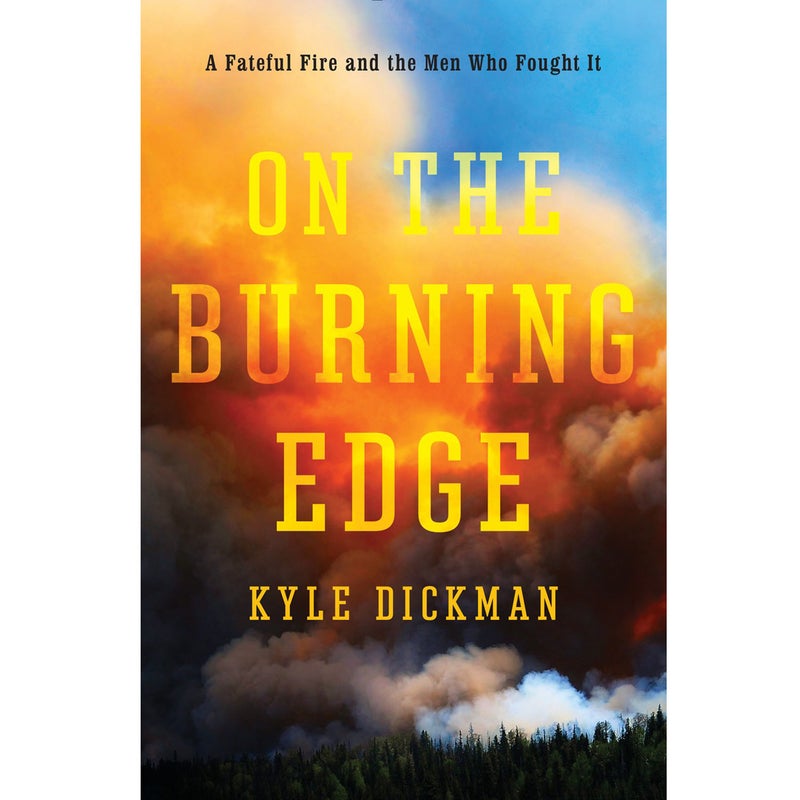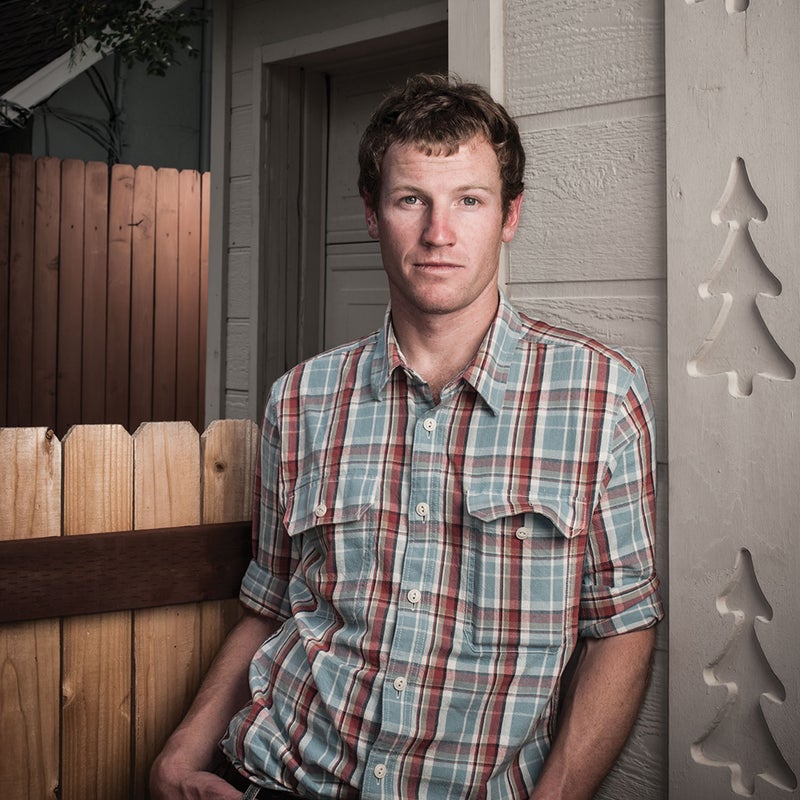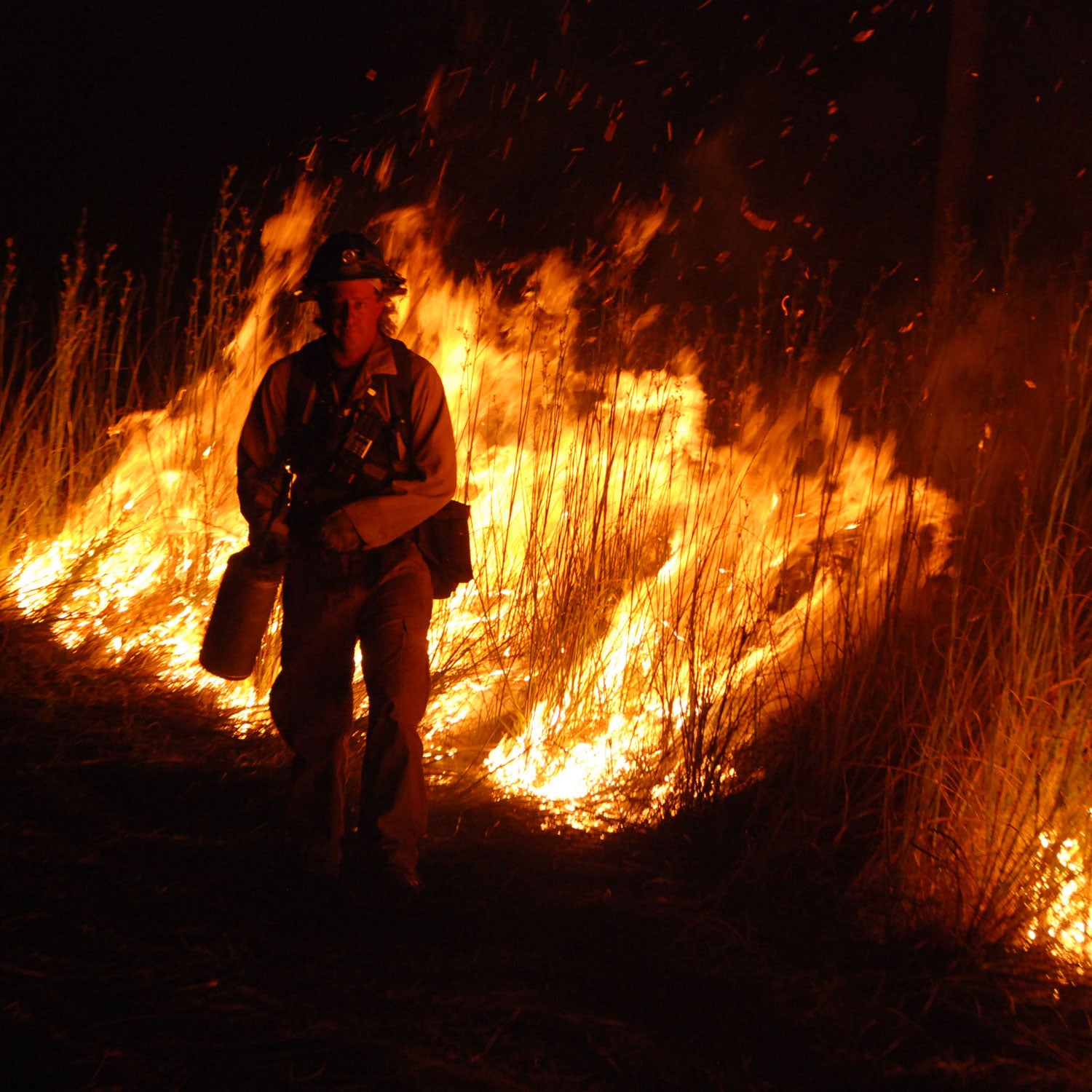If Eric Marsh had any doubts about sending one of his firefighters alone into the path of a raging wildfire near Yarnell, Arizona, the veteran superintendent didn’t speak them out loud. He certainly had reason for concern. Marsh was in command of the twenty-man Granite Mountain Hotshots, and on June 30, 2013, the Yarnell Hill Fire was bearing down on the 650-person town. Already the blaze had defied the expectations of the few hundred firefighters from half a dozen different agencies on scene. Ranches were burning, a middle school was soon to catch fire, and entire subdivisions of homes were threatened. Marsh’s security lay in the fact that all of his men stood just feet away from the safety of the “black”—the already torched brush that couldn’t reignite. All of his men, that is, except for one: Brendan “Donut” McDonough.
Marsh and the Granite Mountain Hotshots were working on a long ridgeline above town, and to keep constant watch on the distance between the main fire and the other nineteen men, Marsh had sent Donut into an unburned valley that, unbeknownst to him, was soon to be consumed by flames. By 3:30 p.m. the fire’s three-mile flank was still smoldering a few hundred yards north of Donut’s lookout position. Marsh knew the flank wasn’t likely to remain so well behaved. The forecast was calling for thunderstorms, along with forty-to-fifty-mile-per-hour gusts out of the north—a threefold increase over the steady breeze that had fanned the flames all day.
Marsh felt the wind before most other firefighters and immediately radioed his supervisors to warn them of the dangerous shift. Minutes later, the long flank jumped to life like a magician’s trick. Along a three-mile line of brittle chaparral brush, what had been a veil of wispy white smoke transformed into a uniform wall of thirty-foot flames now advancing toward the homes in Yarnell. Evacuations hadn’t started, but when the wind shifted, homeowners began frantically loading valuables into their cars. Not even the dozens of vehicles on scene—fire engines and a DC-10 air tanker, a specially modified commercial jet that could unload thirty thousand gallons of fire retardant in a single drop—could stop the flaming front. The town had only hours to stand.

Marsh watched the flames leap unchecked across a drainage about a quarter-mile from Donut’s lookout. Then he heard Donut’s radio call to the crew’s second-in-command, Jesse Steed.
“Steed, Donut.” Heavy breathing. “It’s hit my trigger point. I’m heading back to the safety zone.”
Donut dropped off the back side of the granite knoll and started sprinting through brush so dry it cracked as he swatted it aside. Embers and ash drifted over his head. He plowed through the bushes toward a small clearing around the metal skeleton of a long-abandoned road grader.
As he stumbled into the clearing, Donut suddenly realized it wasn’t possible to outrun the blaze—a nightmare scenario for every wildland firefighter, made worse by the fact that the clearing, his only chance for survival, was barely the size of a tennis court. He couldn’t outrun the fire. Flames had halved the distance between the drainage and the clearing in minutes. The wind thrashed the walls of scrub oaks and manzanita bushes surrounding the grader. Even if Donut deployed his fire shelter, an aluminum shield designed to deflect heat, his chances of surviving a burnover were grim. Marsh knew as much, too.
The emergency lights of fire engines rushing toward Yarnell lit up the distant horizon. Air tankers dropping retardant on the blaze swarmed overhead, and somewhere on the ridge near Marsh, the nineteen other members of the Granite Mountain Hotshots watched from the safety of the already blackened fuel. None of them could do anything to help Donut. Marsh was about to watch flames overrun his crew member—then an entire town.
Less than an hour later, Yarnell was ablaze, and Donut was the only surviving member of Granite Mountain. Marsh, Steed, and seventeen other hotshots were all dead. Inexplicably, the crew had left the black to move to the safety of a ranch closer to town, and the fire had trapped them in the no-man’s-land between the two safety zones. The deaths of the nineteen Granite Mountain Hotshots represented the most firefighters killed in the line of duty since 9/11. It was the single greatest loss of life among wildland firefighters since the 1930s. For many first responders, June 30, 2013, had the same instantaneous effect as 9/11. They stopped whatever they were doing to try to comprehend the gravitas of the situation. Most wildland firefighters in the nation—current or former—can tell you exactly where they were when they heard the news.

I was on my front porch in Santa Fe, New Mexico. I spent five summers fighting fires in California, and Granite Mountain’s deaths came a week after I’d finished a story for �����ԹϺ��� magazine about embedding with my former hotshot crew during the 2012 fire season. On July 9, �����ԹϺ��� sent me to Prescott, Arizona, to attend the hotshots’ memorial. This was the beginning of a yearlong journey to find out exactly what had happened at Yarnell Hill. The reporting would take me from the mountains of New Mexico to the basin where the men had died, but most often, I returned to Granite Mountain’s home base, in Prescott.
I first met Donut more than a month after the tragedy, in a dark office at Prescott’s Yavapai College, the local community college. He was twenty-two and rangy, with blond hair cropped close, and wore a tank top and cutoff jean shorts. His leg was red and swollen. That week he’d gotten a new specialty tattoo, above an older piece that blended a frosted doughnut with Granite Mountain’s logo.
“It’s the most painful tattoo you can get,” Donut said, implying that the physical pain had provided relief from something worse.
His phone vibrated every few minutes. Sometimes it was a text from a concerned friend or loved one; more often it was a call from a news outlet—Good Morning America, CBS, GQ, the local paper—requesting an interview. Donut gave dozens, but his explanation of what happened on Yarnell Hill that day never really fit into sound bites. Donut wasn’t the most polished guy to begin with, and he’d only just begun to process the disaster that had killed so many of his friends. Most stories that emerged were less about what had happened during the fire and more a reflection of Donut’s grief and incomprehension.
We spoke for two and a half hours that first day. Over the next year, I talked to Donut often as he battled the worst of his post-traumatic stress and came to terms with survivor’s guilt. He took me to the locations of fires Granite Mountain fought during the 2013 season, told me stories of the crew, and related what it’s like to be a hotshot in an age when fires are burning more intensely than at any time in modern history.
But ultimately, this wasn’t a story that could be told through one man’s experience alone.
From the book by Kyle Dickman. Copyright © 2015 by Kyle Dickman. Reprinted by arrangement with Ballantine, an imprint of Random House, a division of Penguin Random House LLC. All rights reserved.
Read Dickman's 2013 feature story for �����ԹϺ��� about the 19 men who died in the Yarnell Fire.


